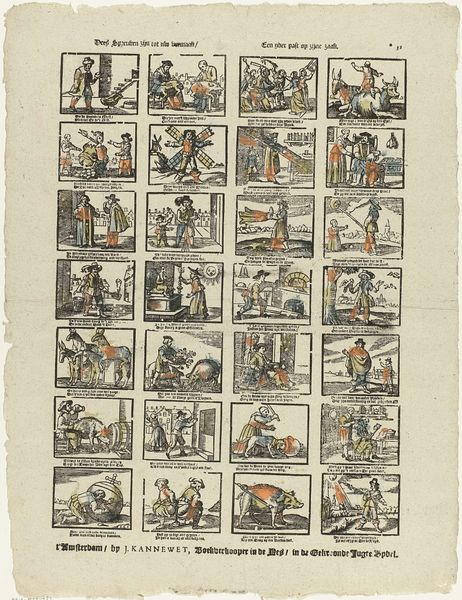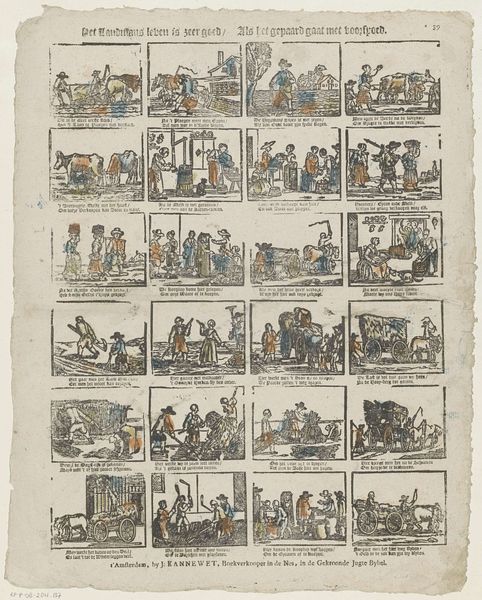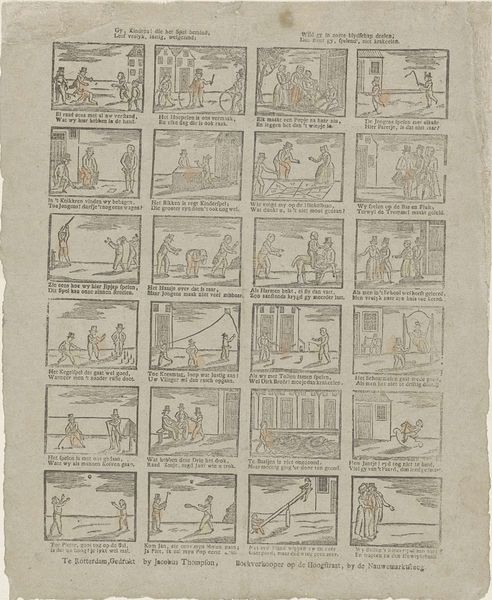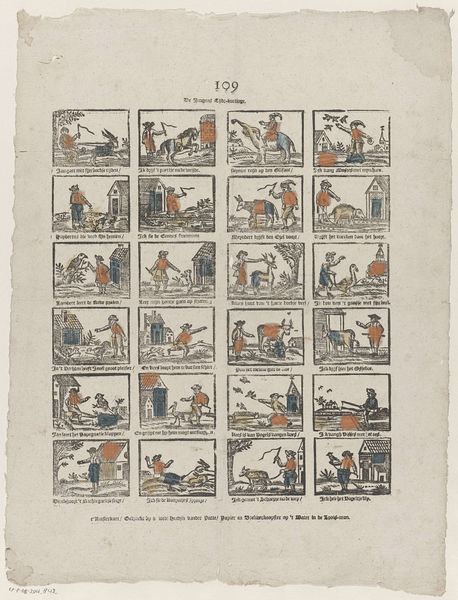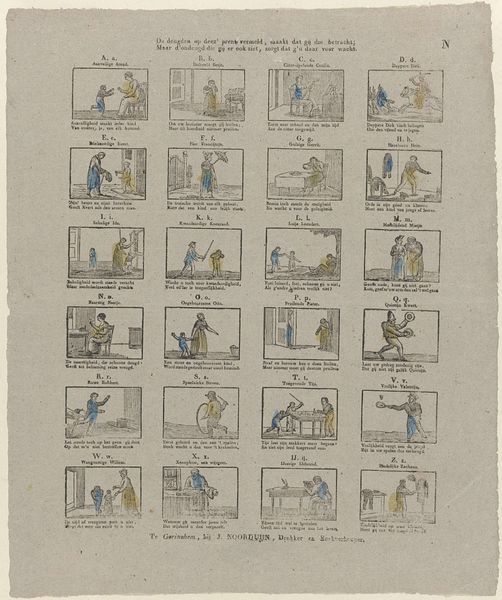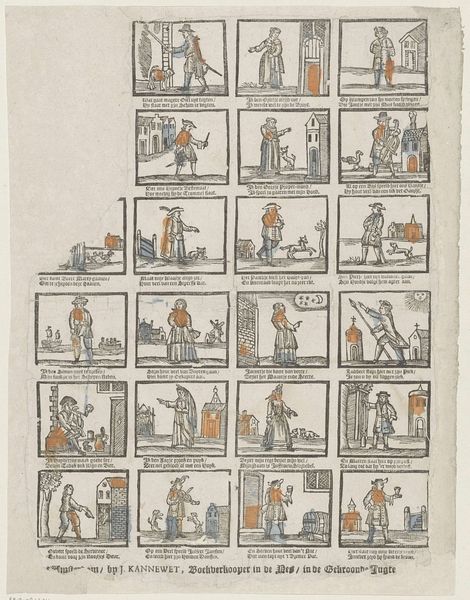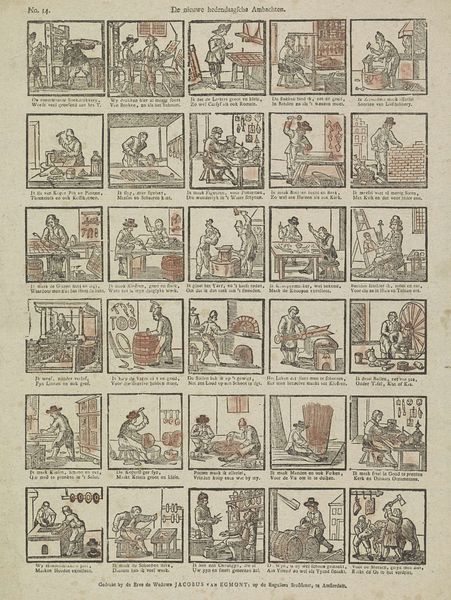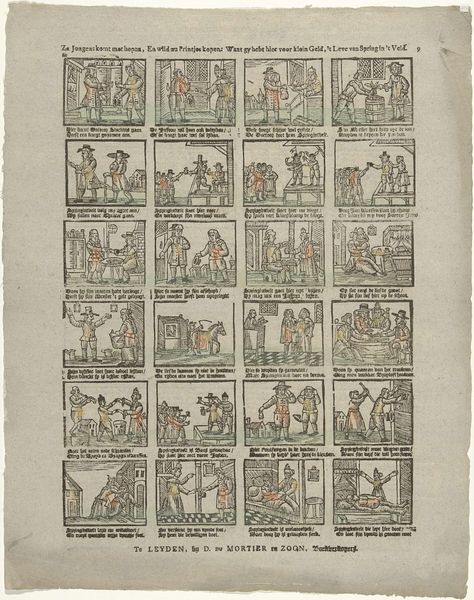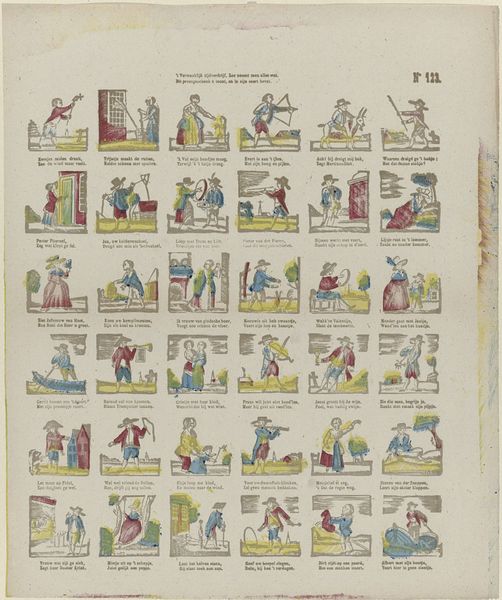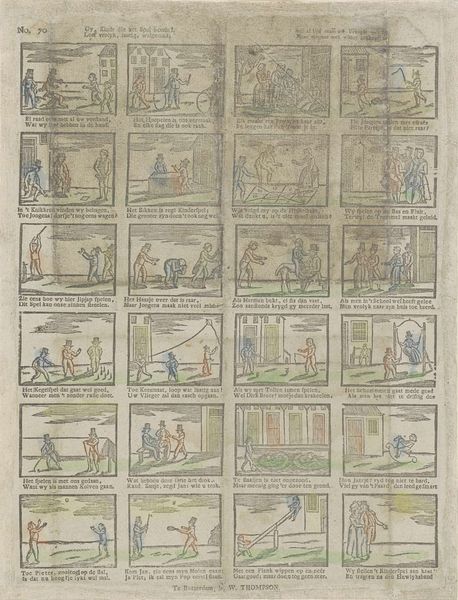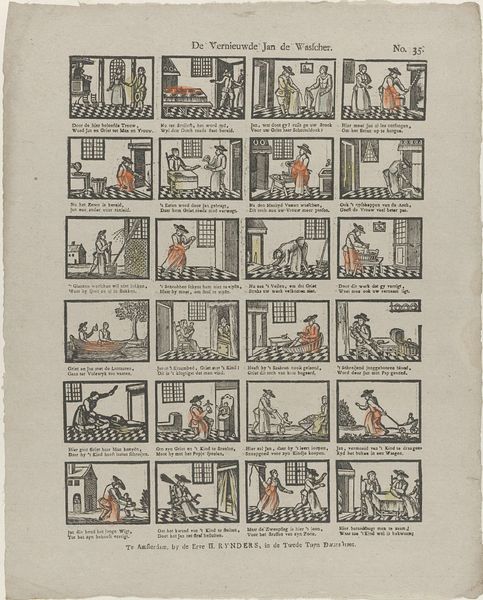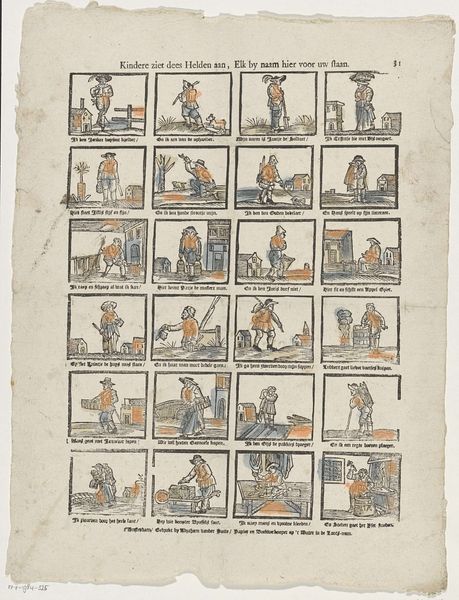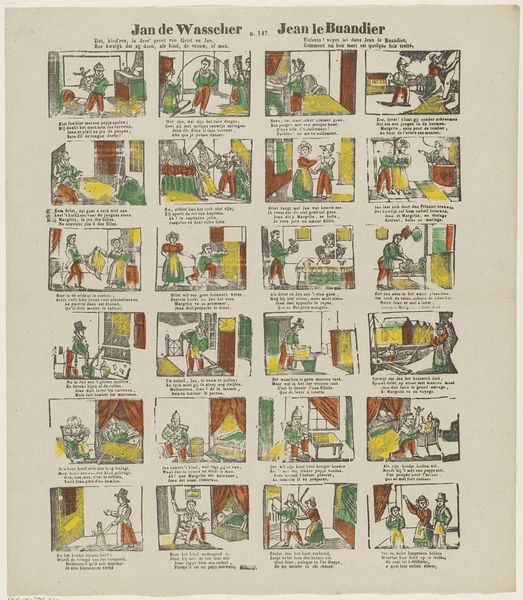
Komt lustig jongens loopt met vlyt / hier hebje d'Amsterdamse slagtijd 1767 - 1793
0:00
0:00
print, engraving
#
narrative-art
#
dutch-golden-age
# print
#
old engraving style
#
comic
#
genre-painting
#
engraving
Dimensions: height 410 mm, width 310 mm
Copyright: Rijks Museum: Open Domain
Curator: What strikes you first about this 18th-century print entitled "Komt lustig jongens loopt met vlyt / hier hebje d'Amsterdamse slagtijd," attributed to Erven Hendrik van der Putte, and housed here at the Rijksmuseum? Editor: The layout. It resembles a sort of comic strip, each scene neatly boxed. And the color palette—it's restrained, almost subdued. Despite the rather grim subject, there’s a certain order and clarity. Curator: It's a narrative artwork, a depiction of Amsterdam’s slaughtering season. Notice how each small scene unfolds, presenting a sequential understanding of the process. The limited color washes—red and blue mainly—highlight key elements. Editor: So, a step-by-step visual guide to urban slaughter? It’s fascinating to consider how such images shaped public perceptions of this messy reality. Slaughter wasn't hidden; it was part of city life. These public displays of animal butchery normalized and even celebrated these traditions. Curator: Exactly. This print is both a factual record and a cultural statement. Observe how symbols, like specific tools and gestures, communicate expertise and community involvement. These scenes highlight the butchers' craft, suggesting not brutality but skill and contribution. Editor: What about the ethical questions that may arise viewing this image? Did similar displays foster discussions of ethical treatment of animals during that period? It makes one think about shifting social attitudes towards meat production over the centuries. Curator: The title “Come gaily boys run with diligence / Here is Amsterdam’s slaughtering time" suggests more acceptance of it as part of communal life and celebration of abundance. Though ethics weren't overtly questioned, the images themselves provoked an ongoing negotiation with those moral and social aspects of the city. Editor: Reflecting upon that visual narrative reminds me of how cities managed their food supply in a pre-industrial age. Its cultural memory invites reflection on changing values. Curator: It's fascinating how this singular print, created over two centuries ago, holds layers of societal narratives on labor, the body, ethics, and visual language—offering insights into shifting beliefs through enduring symbols.
Comments
No comments
Be the first to comment and join the conversation on the ultimate creative platform.
